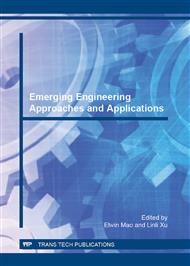[1]
M.P. Papazoglou, D. Georgakopoulos, Service-oriented computing, Communications of the ACM, 2003, 46(10): 25–29.
Google Scholar
[2]
W. Yi, M.B. Blake, Service-oriented computing and cloud computing: challenges and opportunities, IEEE Internet Computing, 2010, 14(6): 72-75.
DOI: 10.1109/mic.2010.147
Google Scholar
[3]
J. Yang, Web Service Componentization, Communications of the ACM, 2003, 46(10): 35-40.
Google Scholar
[4]
E. Gamma, R. Helm, R. Johnson, and J. Vlissides, Design Patterns: Elements of Reusable Object-Oriented Software, Addison-Wesley, USA, (1994).
Google Scholar
[5]
G. Cai, Design pattern projection based on structure, High Performance Computing Technology, 2010, 6: 36-41.
Google Scholar
[6]
D. Martin and M. Burstein(eds. ), OWL-S: Semantic Markup for Web Services, 2004, http: /www. w3. org/ Submission/2004/SUBM-OWL-S-20041122.
Google Scholar
[7]
B. Benatallah, F. Casati, D. Grigori, et al, Developing adapters for web services integration, in Proc. 17th Int. Conf. Advanced Information Systems Engineering, 2005, pp.415-429.
Google Scholar
[8]
R. Quintero and V. Pelechano, Conceptual Modeling of Service Composition using Aggregation and Specialization Relationships, in Proc. 44th annual Southeast regional conference, ACM, 2006, pp.452-457.
DOI: 10.1145/1185448.1185548
Google Scholar
[9]
M. Tut and D. Edmond, The Use of Patterns in Service Composition. in Proc. 6th Int. Workshop Web Services, Business, and the Semantic Web, 2002, pp.28-40.
DOI: 10.1007/3-540-36189-8_3
Google Scholar
[10]
A. Barros, M. Dumas, and H. M. ter Hofstede, Service Interaction Patterns: Towards a Reference Framework for Service-based Business Process Interconnection, 2005, 1-26, doi. http: /citeseerx. ist. psu. edu/viewdoc/ summary? doi=10. 1. 1. 93. 7328.
Google Scholar


